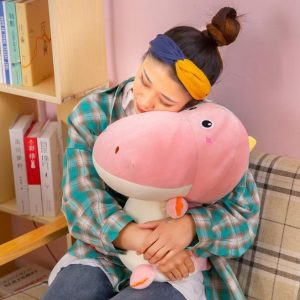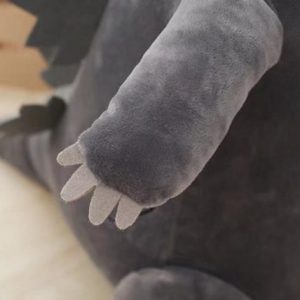The evolution of stuffed animals can be traced back thousands of years, with their development closely tied to advancements in human culture, technology, and materials. Here is an overview of the key milestones in the evolution of stuffed animals:
- Ancient Origins: Stuffed animals have ancient roots. Archaeologists have found evidence of early civilizations creating stuffed toys from various materials, such as fabric, straw, and animal skins. These toys were often made for children and were simple in design.
- The Rise of Teddy Bears: One of the most iconic types of stuffed animals, the teddy bear, has a fascinating origin. In 1902, President Theodore Roosevelt’s hunting trip led to the creation of the teddy bear when a political cartoon depicted him refusing to shoot a bear cub. The incident inspired the creation of the first teddy bear by Morris Michtom in the United States and Richard Steiff in Germany, independently, around the same time.
- Mass Production: With the development of industrial manufacturing techniques in the late 19th and early 20th centuries, stuffed animals became more accessible to a broader population. Mass production allowed these toys to be manufactured quickly and at a lower cost.
- Disney and Pop Culture: The popularity of animated characters like Mickey Mouse and other Disney characters in the mid-20th century influenced the production of stuffed animals based on these iconic figures. Stuffed toys became not only playthings but also collectibles for fans of these beloved characters.
- Synthetic Materials: Advancements in synthetic materials, such as polyester fiberfill and synthetic fur, revolutionized the manufacturing of stuffed animals. These materials made toys softer, more durable, and easier to clean, further increasing their popularity.
- Personalization and Customization: In recent decades, the ability to personalize stuffed animals with embroidery, clothing, and accessories has become popular. This customization allows for a more unique and individualized gift.
- Therapeutic Use: Stuffed animals have found a place in therapeutic settings, such as play therapy, to provide emotional support and comfort to children and adults.
- Technology Integration: With the advent of technology, interactive stuffed animals with electronic components have been developed. These toys can talk, sing, or respond to touch, enhancing the play experience for children.
- Sustainability and Ethical Concerns: In response to environmental concerns, there has been a growing interest in eco-friendly and sustainable stuffed animals made from recycled or organic materials.
- Artistic Expression: Contemporary artists have embraced stuffed animals as a medium for their creative expressions, using them in art installations, sculptures, and performance art.
The evolution of stuffed animals reflects not only changes in manufacturing techniques but also shifts in cultural preferences, the significance of play, and the emotional connections people form with these cuddly companions. From simple fabric toys to technologically advanced interactive plushies, stuffed animals have continued to hold a special place in the hearts of people of all ages.








